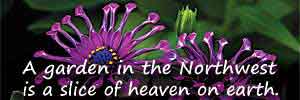Dorotheanthus bellidiformis
LIVINGSTONE DAISY, LIVINGSTON DAISY, BELLISDOROTHEANTHUS, ICE PLANT, FIG MARIGOLD
Syn. Dorotheanthus criniflorum, Mesembryanthemum criniflorum, Mesembryanthemum bellidiformis
Family: Aizoaceae
Pronounced: do-ro-thee-ANTH-us bel-id-ee-FORM-is
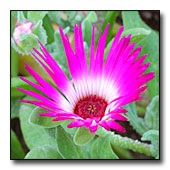
Quick Jumps
Growing Guide
Rainy Side Notes
GROWING GUIDE
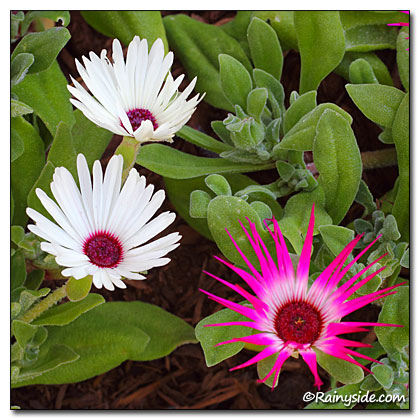
Origin:
South Africa.
Plant Group:
Annual.
Hardiness:
Sunset zones: All.
USDA zones: 11; treat as an annual.
Mature size:
Height: 6 inches (15 cm).
Width: 12 inches (30 cm).
Flowering period:
Summer.
Flowering attributes:
Yellow, cream, pink, lavender and orange solitary daisy-like flowers. Flowers close during cloudy weather and at night.
Leaf attributes:
Succulent, ovate, light green leaves.
Growth habit:
Low growing mounds.
Light:
Full sun.
Soil:
Sandy, poor, well-drained soils.
Feeding:
None is neccessary.
Propagation Methods:
Sow seed in late winter or early spring at 61-66°F (15-18°C).
Pruning Methods:
Increase flower production by deadheading spent flowers.
Rainy Side Notes
Livingstone daisies thrive in sandy, dry, poor soils so they are excellent for a seaside garden. They need full sun though, the flowers only open when the sun is out and closes at night and cloudy days. They are beautiful little ice plants that cover themselves with daisies. When my daughter was a youngster, we watered them with a gentle spray nozzle so we could watch the pollen bleed.
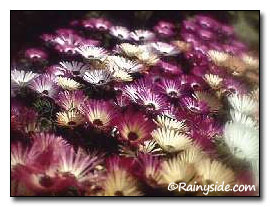
The genus Dorotheanthus has only six species in it. Related to Delosperma (ice plant), it too is a succulent. D. bellidiformis comes from South Africa and grows in the sub desert. It is lovely during cool weather; when hot weather arrives, the plant declines. This beautiful little perennial is treated as an annual in the Pacific Northwest. Start plants early and set them out in the garden after last frost.
I grew these years ago, so this year I decided to grow them again. Although Livingstone daisies are technically perennials they are easy to grow from seed and will flower proliifically the first year. If you don't have time to plant them in spring, sow them in June for a later summer to fall flower.
Debbie Teashon
The image on the (bottom right) is from a photo taken in 1985 in a San Juan Island garden. The other images were photographed in author's garden.
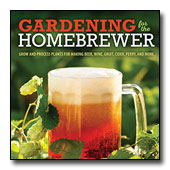
Gardening for the Homebrewer: Grow and Process Plants for Making Beer, Wine, Gruit, Cider, Perry, and More
By co-authors Debbie Teashon (Rainy Side Gardeners) and Wendy Tweton
Copyright Notice | Home | Search | Annuals

